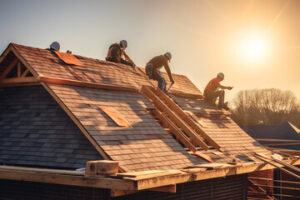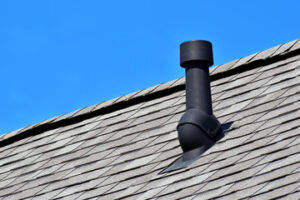Home » Roofing
Category Archives: Roofing
How to Perform Roof Inspections and Maintenance Without Climbing a Ladder
Like any part of your home, your roof requires regular inspections and maintenance to avoid costly problems in the future. Catching issues early on can avert the need for major repairs and save you money on insurance installments.

Ignoring roof maintenance can lead to leaks that cause water damage to ceilings, walls, insulation, and structural components. It can also lead to mold, mildew, and rotting.
The roof is a critical part of your home. You can protect your home from costly repairs and other problems by performing simple maintenance tasks like examining your roof from the ground and keeping it clear of debris. At 3rd Generation Home Improvements, our roofing professionals share some expert tips on how to inspect your roof without climbing a ladder.
Walk around your house, paying special attention to areas where the roof meets walls and in valleys where two roof planes intersect. Look for missing or damaged shingles, which can lead to leaks and structural damage. Also, look for areas that are sagging, as this may indicate water damage or compromised support systems.
Check for moss and algae, which can damage the surface of your shingles and lead to leaks. Additionally, look for lichen, which can also cause leaks and other roof issues. Examine your gutters, as well – clogged gutters can allow water to back up and seep through your roof, causing damage to your home and requiring costly repair.
A visual inspection of your roof will give you a good idea of its overall condition, but it is important to get up on the ladder from time to time to perform a more thorough examination. In addition to examining the shingles for damage, you should check for rust or cracks in the thin metal flashing that lines penetrations such as skylights and chimneys. Checking the flashing helps prevent leaks caused by water seeping through these holes.
Finally, examine the fascia and soffit boards, which cover the underside of a roof overhang. These boards are often exposed to the elements and can suffer damage from rain, hail, snow, and winds. Look for rot, warping, cracks, and swelling. If any of these boards are damaged, they should be repaired immediately to protect the underlying wood and your home from weather damage.
In addition to a regular inspection, it is also important to inspect your roof after major storms. This will help catch any leaking areas that might otherwise go unnoticed and provide you with an opportunity to make repairs before the problem becomes serious.
Inspect from the Attic
Many home inspectors consider the attic inspection the most important part of a house roof, even more than the exterior. That is because the attic can reveal problems that don’t show up on the outside, such as water intrusion from a leaky roof. A good attic inspection can reveal rotted materials, mold, rusty nails and other issues that need to be addressed. An attic inspection should be done on a rainy day to make it easier to see active leaks.
A professional attic inspection should include checking the condition of the insulation, determining the ventilation, observing how well the vents work and checking for signs of pests. The attic should be ventilated properly to remove moisture and heat, which extends the life of the roof. If the attic feels drafty or the insulation isn’t adequate, a good inspector will recommend improvements.
Leaks are a major source of damage to the roof, and the attic is a common place to find them. Look for stains on the roof sheathing or framing, and for water marks on vent pipes. The attic should also be checked for water stains on the underside of the attic floor, as these can indicate that there is a leak in the roof.
Other items to check for in the attic are spliced wires and covered junction boxes, because these can cause fires. The attic should also be inspected for sagging or improperly sloped rafters and joists. These are structural problems that should be corrected by a qualified builder or roofer, as they can affect the integrity of the whole house.
One of the biggest complaints against home inspectors is missing roof leaks, and an attic inspection can help avoid this problem by revealing hidden sources of water entry. The attic should also be inspected to ensure that the vents are working well and that they haven’t been blocked by debris or other materials. If the attic is insulated, the inspector will check for proper insulation and insulation depth, which is very important for energy efficiency. If there is a whole house fan in the attic, it should be inspected for proper ventilation and clearance from combustible materials.
Trim Tree Branches
Trees can provide shade to your home, add beauty and value to your property, and prevent soil erosion. However, if left unchecked, tree branches can grow too close to the house and cause damage. It’s important to trim your trees regularly to prevent this from happening. A Certified Arborist knows the science behind tree growth and how to properly prune your trees.
If a branch is hanging over the roof, it should be trimmed immediately. Overhanging branches can cause many problems, including shingle damage and water leaks. They can also clog gutters and lead to moisture buildup under shingles, which can lead to mold and rot.
A professional should perform any tree trimming on your home’s roof, as it is a dangerous job. It requires climbing up and down a ladder, which can be unsafe for the homeowner. A professional can inspect the limbs for any signs of damage and cut them accordingly.
One of the most common causes of roof damage is when a tree’s branches rub against the shingles during a wind storm. This can scratch away the outer layer of the shingle, which exposes the inner core to moisture and leads to rot and mold.
It’s important to keep the branches of your trees trimmed at all times, but especially before a storm. Regular inspections can help you spot any problems before a storm hits, so you have time to get them taken care of.
Another sign that it’s time to trim a tree’s branches is the accumulation of leaves and needles on the roof or in the gutters. This can be caused by overhanging limbs and block the flow of water, which can lead to leaks or even structural damage to your home.
It’s important to know how far tree branches should be from your house before attempting to trim them yourself. If you trim the branches too close to your house, it could lead to them becoming damaged or even falling over during a storm. A Certified Arborist knows how to safely and effectively trim a tree, so it’s best to leave this task to an expert.
Clean the Gutters
The gutters are a vital part of the roofing system as they funnel rain and stormwater away from the home. If they become clogged with leaves, twigs, and other debris, it can cause problems such as water damage to the roof and walls of the house. This can also lead to the growth of toxic mold. Gutter cleaning is a common task that should be done at least twice a year.
Most experts agree that the best time to clean the gutters is in spring and fall when the trees have shed their leaves. If you have very large or overhanging trees, it may be necessary to do this more often. If you are going to attempt to clean the gutters on your own, it is a good idea to use a ladder with a safety strap and work with a partner. It is also a good idea to hire professionals who have the proper equipment and training to get the job done quickly and safely.
Gutter cleaning is usually the most time-consuming part of any roof maintenance project. It can take an hour or more to clean a gutter that is very dirty. This is because you will need to spend a lot of time climbing up and down the ladder and scooping out the debris with your hands. It is also a good idea to wear rubber gloves when cleaning the gutters because the twigs and leaves can be very sharp and scratchy.
In addition to the above, a professional can inspect and repair any roof penetrations such as skylights, vents and chimneys. They can also make sure that the seals around these penetrations are in good condition. They can also trim any branches that are hanging over the roof or that are too close to it. They can also check that the downspouts are free from clogs and that they are draining properly.
Finally, a professional can help you develop a maintenance plan for your roof. This may include a schedule for regular cleanings and inspections. They can recommend gutter guards to keep out larger debris and help prevent clogs, and they can provide tips on how to maintain the integrity of your roof over the long term.
